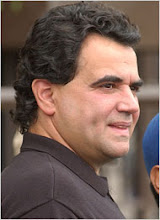As you may know, the King Ranch in Texas is one of the oldest and largest cattle
ranches in the United States. More recently though, they have diversified their
interests and have entered into the TB horse-racing / breeding arena, so thought
it important to post this info here;
King Ranch Horses Under Quarantine
http://madcowhorses.blogspot.com/2010/01/equine-piroplasmosis-usa-02-texas.html
Saturday, April 17, 2010
UNDIAGNOSED DEATHS, EQUINE (Persian Gulf)
BAHRAIN: REQUEST FOR INFORMATION
*************************************************************
A ProMED-mail post
ProMED-mail is a program of the
International Society for Infectious Diseases
Date: Fri 16 Apr 2010
Source: The Horse.com [edited]
An as-yet unidentified illness has killed 2 horses and sickened 10
others in Bahrain, reports the Gulf Daily News [see at
].
Authorities began investigating the situation on 15 Apr 2010, and
blood tests have been sent to a specialized laboratory in the United
Arab Emirates.
Because it had not yet been determined whether the illness is viral
or bacterial or how it spreads, horse and stable owners in the area
have been warned not to move their animals. Authorities are also
recommending that owners do not take part in equine sporting events
until more information is forthcoming.
"Two horses have already been put down since they had very severe
infection," Dr Salman Abdul Nabi, Director of Animal Wealth
Directorate, Ministry of Municipality Affairs and Agriculture, told
the Gulf Daily News. Abdul Nabi is Bahrain's Municipalities and
Agriculture Ministry livestock director.
Abdul Nabi reportedly said that he does not feel the illness is
contagious and noted that only a few of the country's 6500 horses
were afflicted.
Scott Weese, DVM, DVSc, Dipl. ACVIM, assistant professor of clinical
studies at the University of Guelph's Ontario Veterinary College, in
reporting about the situation on Guelph's EquID Blog, said that it is
probably premature to make assessments about whether the illness is
contagious.
"There are many potential causes for an outbreak like this," wrote
Weese. "Not all of them, in fact, are infectious disease, since
toxin-mediated disease must also be considered. If multiple horses
are being affected, the cause is more likely viral than bacterial,
but bacterial, viral, fungal, and parasitic diseases must be
considered."
The Kingdom of Bahrain is an archipelago of 36 islands in the Persian
Gulf off the eastern coast of Saudi Arabia and is about 4 times the
size of Washington, DC.
[Byline: Tracy Gantz]
--
Communicated by:
ProMED-mail
[The available information does not specify the clinical signs and PM
findings of the mentioned cases. Excluding infectious diseases,
particularly the 2, non-zoonotic equine orbiviruses, African horse
sickness and equine encephalosis, is urgently required. - Mod.AS]
[Maps of Bahrain can be seen at
and
. - Sr.Tech.Ed.MJ]
[see also:
2009
----
Equine encephalosis - Israel (03) 20091026.3709
Equine encephalosis - Ethiopia: serological evidence, RFI 20090509.1734
Equine encephalosis - Israel (02): OIE 20090501.1645
Equine encephalosis - Israel: 2008 20090401.1254
2008
----
African horse sickness - Ethiopia (02): serotype 2, update 20080930.3087
African horse sickness - Ethiopia: serotype 2, RFI 20080916.2898
2007
----
Equine encephalosis - South Africa (W Cape) 20070509.1495
1999
----
Equine encephalosis - S. Africa (Port Elizabeth) 19990428.0708]
...................................arn/mj/lm
*##########################################################*
************************************************************
ProMED-mail makes every effort to verify the reports that
are posted, but the accuracy and completeness of the
information, and of any statements or opinions based
thereon, are not guaranteed. The reader assumes all risks in
using information posted or archived by ProMED-mail. ISID
and its associated service providers shall not be held
responsible for errors or omissions or held liable for any
damages incurred as a result of use or reliance upon posted
or archived material.
************************************************************
Donate to ProMED-mail. Details available at:
************************************************************
Visit ProMED-mail's web site at.
Send all items for posting to: promed@promedmail.org
(NOT to an individual moderator). If you do not give your
full name and affiliation, it may not be posted. Send
commands to subscribe/unsubscribe, get archives, help,
etc. to: majordomo@promedmail.org. For assistance from a
human being send mail to: owner-promed@promedmail.org.
############################################################
############################################################
*************************************************************
A ProMED-mail post
ProMED-mail is a program of the
International Society for Infectious Diseases
Date: Fri 16 Apr 2010
Source: The Horse.com [edited]
An as-yet unidentified illness has killed 2 horses and sickened 10
others in Bahrain, reports the Gulf Daily News [see at
Authorities began investigating the situation on 15 Apr 2010, and
blood tests have been sent to a specialized laboratory in the United
Arab Emirates.
Because it had not yet been determined whether the illness is viral
or bacterial or how it spreads, horse and stable owners in the area
have been warned not to move their animals. Authorities are also
recommending that owners do not take part in equine sporting events
until more information is forthcoming.
"Two horses have already been put down since they had very severe
infection," Dr Salman Abdul Nabi, Director of Animal Wealth
Directorate, Ministry of Municipality Affairs and Agriculture, told
the Gulf Daily News. Abdul Nabi is Bahrain's Municipalities and
Agriculture Ministry livestock director.
Abdul Nabi reportedly said that he does not feel the illness is
contagious and noted that only a few of the country's 6500 horses
were afflicted.
Scott Weese, DVM, DVSc, Dipl. ACVIM, assistant professor of clinical
studies at the University of Guelph's Ontario Veterinary College, in
reporting about the situation on Guelph's EquID Blog, said that it is
probably premature to make assessments about whether the illness is
contagious.
"There are many potential causes for an outbreak like this," wrote
Weese. "Not all of them, in fact, are infectious disease, since
toxin-mediated disease must also be considered. If multiple horses
are being affected, the cause is more likely viral than bacterial,
but bacterial, viral, fungal, and parasitic diseases must be
considered."
The Kingdom of Bahrain is an archipelago of 36 islands in the Persian
Gulf off the eastern coast of Saudi Arabia and is about 4 times the
size of Washington, DC.
[Byline: Tracy Gantz]
--
Communicated by:
ProMED-mail
[The available information does not specify the clinical signs and PM
findings of the mentioned cases. Excluding infectious diseases,
particularly the 2, non-zoonotic equine orbiviruses, African horse
sickness and equine encephalosis, is urgently required. - Mod.AS]
[Maps of Bahrain can be seen at
[see also:
2009
----
Equine encephalosis - Israel (03) 20091026.3709
Equine encephalosis - Ethiopia: serological evidence, RFI 20090509.1734
Equine encephalosis - Israel (02): OIE 20090501.1645
Equine encephalosis - Israel: 2008 20090401.1254
2008
----
African horse sickness - Ethiopia (02): serotype 2, update 20080930.3087
African horse sickness - Ethiopia: serotype 2, RFI 20080916.2898
2007
----
Equine encephalosis - South Africa (W Cape) 20070509.1495
1999
----
Equine encephalosis - S. Africa (Port Elizabeth) 19990428.0708]
...................................arn/mj/lm
*##########################################################*
************************************************************
ProMED-mail makes every effort to verify the reports that
are posted, but the accuracy and completeness of the
information, and of any statements or opinions based
thereon, are not guaranteed. The reader assumes all risks in
using information posted or archived by ProMED-mail. ISID
and its associated service providers shall not be held
responsible for errors or omissions or held liable for any
damages incurred as a result of use or reliance upon posted
or archived material.
************************************************************
Donate to ProMED-mail. Details available at:
************************************************************
Visit ProMED-mail's web site at
Send all items for posting to: promed@promedmail.org
(NOT to an individual moderator). If you do not give your
full name and affiliation, it may not be posted. Send
commands to subscribe/unsubscribe, get archives, help,
etc. to: majordomo@promedmail.org. For assistance from a
human being send mail to: owner-promed@promedmail.org.
############################################################
############################################################
Thursday, April 15, 2010
Learning Equine Anatomy / Legs
Click on title above to see excellent learning vid whether you are just into horse anatomy, lameness issues or blacksmithing, barefoot trimming, etc.
I am trying to learn to do my own equines. It pays to start from the inside out.
I am trying to learn to do my own equines. It pays to start from the inside out.
Jockey Club Releases Fatality Reports
Tuesday, March 23, 2010 Contact: Bob Curran Jr. (212 ) 521-5326
Equine Injury Database Statistic Released by The Jockey Club
The Jockey Club today released a North American fatality rate for Thoroughbreds based on a preliminary analysis of data collected over a one-year period in the Equine Injury Database™, the North American database for racing injuries.
The Equine Injury Database, which grew out of a need identified at the first Welfare and Safety of the Racehorse Summit in Lexington, Ky., in October 2006, was launched in July 2008. It is part of an industry-wide emphasis on the protection of the health and welfare of its equine athletes, and the collection of data is the first step in the process of examining and preventing athletic injuries in the racehorse.
Based upon a year’s worth of data beginning November 1, 2008, from 378,864 total starts in Thoroughbred flat races at 73 racetracks participating in the Equine Injury Database, 2.04 fatal injuries were recorded per 1,000 starts.
The analysis was performed by Dr. Tim Parkin, a veterinarian and epidemiologist from the University of Glasgow, who serves as a consultant on the project.
“Data collected from a broad cross-section of racetracks in the United States and Canada will serve as an important tool for racetracks seeking benchmarks concerning the safety of racehorses,” said Parkin. “Over time, as data continues to be added, the database should yield numerous trends and factors associated with racing injuries and lead to strategies for their prevention.”
Racetracks currently have tools provided by InCompass Solutions Inc. to analyze data collected at their respective facilities. In early April, InCompass will make available an enhanced module that automates selected reports.
“Analysis of data in the Equine Injury Database is ongoing,” explained Matt Iuliano, executive vice president and executive director of The Jockey Club. “Dr. Parkin is scheduled to report additional analysis and insights on the matter at the third Welfare and Safety of the Racehorse Summit on June 28 and 29 at Keeneland.”
The Jockey Club, through two of its for-profit subsidiary companies, InCompass and The Jockey Club Technology Services Inc., has underwritten the cost to develop and operate the database as a service to the industry. By agreement with the participating racetracks, from time to time The Jockey Club may publish certain summary statistics from the Equine Injury Database, but will not provide statistics that identify specific participants, including racetracks, horses or persons.
Eighty-one racetracks and the National Steeplechase Association participate in the Equine Injury Database, representing 86 percent of the flat racing days in North America. A list of racetracks participating in the Equine Injury Database can be found at jockeyclub.com/initiatives.asp.
The Jockey Club, founded in 1894 and dedicated to the improvement of Thoroughbred breeding and racing, is the breed registry for North American Thoroughbreds. In fulfillment of its mission, The Jockey Club provides support and leadership on a wide range of important industry initiatives and it serves the information and technology needs of owners, breeders, media, fans and farms, among others.
InCompass is a technology solutions company formed in 2001 to centralize the software applications and systems that serve North American racetracks and simulcast outlets, thereby helping these facilities achieve operational efficiencies, reduce costs and increase revenue.
The Jockey Club Technology Services is a technology company formed in 2002 to maximize the benefits of state-of-the-art communications and data management technology in support of The Jockey Club and its affiliated companies and other customers.
Equine Injury Database Statistic Released by The Jockey Club
The Jockey Club today released a North American fatality rate for Thoroughbreds based on a preliminary analysis of data collected over a one-year period in the Equine Injury Database™, the North American database for racing injuries.
The Equine Injury Database, which grew out of a need identified at the first Welfare and Safety of the Racehorse Summit in Lexington, Ky., in October 2006, was launched in July 2008. It is part of an industry-wide emphasis on the protection of the health and welfare of its equine athletes, and the collection of data is the first step in the process of examining and preventing athletic injuries in the racehorse.
Based upon a year’s worth of data beginning November 1, 2008, from 378,864 total starts in Thoroughbred flat races at 73 racetracks participating in the Equine Injury Database, 2.04 fatal injuries were recorded per 1,000 starts.
The analysis was performed by Dr. Tim Parkin, a veterinarian and epidemiologist from the University of Glasgow, who serves as a consultant on the project.
“Data collected from a broad cross-section of racetracks in the United States and Canada will serve as an important tool for racetracks seeking benchmarks concerning the safety of racehorses,” said Parkin. “Over time, as data continues to be added, the database should yield numerous trends and factors associated with racing injuries and lead to strategies for their prevention.”
Racetracks currently have tools provided by InCompass Solutions Inc. to analyze data collected at their respective facilities. In early April, InCompass will make available an enhanced module that automates selected reports.
“Analysis of data in the Equine Injury Database is ongoing,” explained Matt Iuliano, executive vice president and executive director of The Jockey Club. “Dr. Parkin is scheduled to report additional analysis and insights on the matter at the third Welfare and Safety of the Racehorse Summit on June 28 and 29 at Keeneland.”
The Jockey Club, through two of its for-profit subsidiary companies, InCompass and The Jockey Club Technology Services Inc., has underwritten the cost to develop and operate the database as a service to the industry. By agreement with the participating racetracks, from time to time The Jockey Club may publish certain summary statistics from the Equine Injury Database, but will not provide statistics that identify specific participants, including racetracks, horses or persons.
Eighty-one racetracks and the National Steeplechase Association participate in the Equine Injury Database, representing 86 percent of the flat racing days in North America. A list of racetracks participating in the Equine Injury Database can be found at jockeyclub.com/initiatives.asp.
The Jockey Club, founded in 1894 and dedicated to the improvement of Thoroughbred breeding and racing, is the breed registry for North American Thoroughbreds. In fulfillment of its mission, The Jockey Club provides support and leadership on a wide range of important industry initiatives and it serves the information and technology needs of owners, breeders, media, fans and farms, among others.
InCompass is a technology solutions company formed in 2001 to centralize the software applications and systems that serve North American racetracks and simulcast outlets, thereby helping these facilities achieve operational efficiencies, reduce costs and increase revenue.
The Jockey Club Technology Services is a technology company formed in 2002 to maximize the benefits of state-of-the-art communications and data management technology in support of The Jockey Club and its affiliated companies and other customers.
Subscribe to:
Posts (Atom)
















